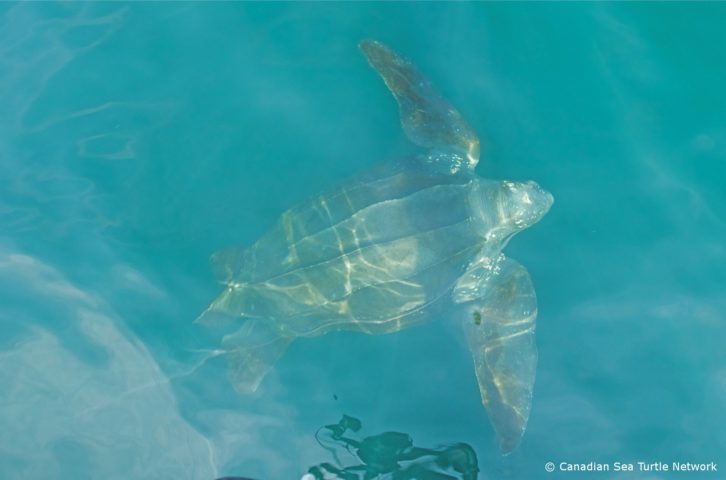Researchers track turtle from Nova Scotia to Trinidad and back
Ruby is one of hundreds of leatherback sea turtles tagged by Fisheries and Oceans

caption
Ruby, a leatherback sea turtle, splashes in the water after researchers attached a satellite tag to her.Ruby knows her way around the Atlantic Ocean.
Mike James’ sea turtle unit at Fisheries and Oceans Canada tagged the leatherback sea turtle in July 2019. When they caught up with her off the Nova Scotian coast, they found another tag on her rear flipper all the way from Trinidad, where Atlantic leatherbacks often nest.
James’ team attached a satellite tag to her and watched as she travelled back to the northern shore of Trinidad where she arrived in May 2020.
“Because of the dedication and the true conservation ethic amongst the (non-governmental organizations) that work in the turtles there, they were able to camp out on the beach and wait for her for a number of nights and their patience was rewarded,” James said in an interview.
She’s currently headed south for the winter.
We’re watching Ruby, a sea turtle tagged off the coast of #Halifax in 2019. In June, she returned to the Scotian Shelf where she continued her journey along the coast of Nova Scotia, through Sydney Bight and the Cabot Stait, arriving in the Gulf of St. Lawrence by early July. pic.twitter.com/BIFzN5WEOb
— DFO Maritimes (@DFO_MAR) November 16, 2021
Leatherback sea turtles can be over two metres in length, making them the largest sea turtle species in the world, according to Kathleen Martin, executive director of the Canadian Sea Turtle Network.
“They start off their life weighing about as much as a KitKat bar and then they grow to over 1,000 pounds eating really just jellyfish, which is pretty amazing,” Martin said.
“They’re feeding on giant jellyfish that stay off Atlantic Canada every spring, summer and fall. So, it’s a really critical place for western Atlantic leatherback to feed if not one of the most important places in the ocean.”
James and his colleagues in Trinidad have continued to tag and track Ruby since she last arrived in Trinidad. Last year, she returned to the Scotian Shelf, the Atlantic waters surrounding Nova Scotia, in the summer and remained in northern Atlantic waters over the winter.
“She stayed pretty far north whereas most of them would drop down a lot further south at least the latitude of Florida, so she didn’t do that,” James said.
One reason for this behaviour is energy conservation, according to James. If Ruby doesn’t go south over the winter, she doesn’t have to travel a long distance back north to feed in the summer.
“The next summer she just jogged back up on the (Scotian) Shelf, as we expect most leatherbacks to do in our part of the world and was able to kind of exploit jellyfish on the shelf proper.”

caption
Leatherback sea turtles can grow to weigh over a ton, eating almost their bodyweight in jellyfish each day.Ruby was named after the mother of John Sherman Bleakney, a biologist at Acadia University and mentor to James.
Bleakney was the first to hypothesize in the 1960s from his own observations that leatherback sea turtles came to the eastern Canadian shelf habitually as part of their migration patterns, James said.
Over the years, with the help of other researchers like James, Bleakney’s ideas about leatherbacks were proven true. James’ team has now tagged hundreds of the turtles.
Bleakney died in October 2019 at 91. Before he passed away, James took him out to see a leatherback sea turtle in the wild for the first time.
“This guy was such a mentor for me, and I was really impacted by his thinking and his seminal paper way back when, so it was really nice for me to be able to take him out for him to see a free-swimming animal,” James said.
Thanks to researchers like Bleakney and James, we know Ruby will likely be back in Nova Scotia next spring.
About the author
Victoria Welland
Victoria is a journalist with The Signal at the University of King's College. She is also a member of the news team at CKDU 88.1 FM. Originally...
